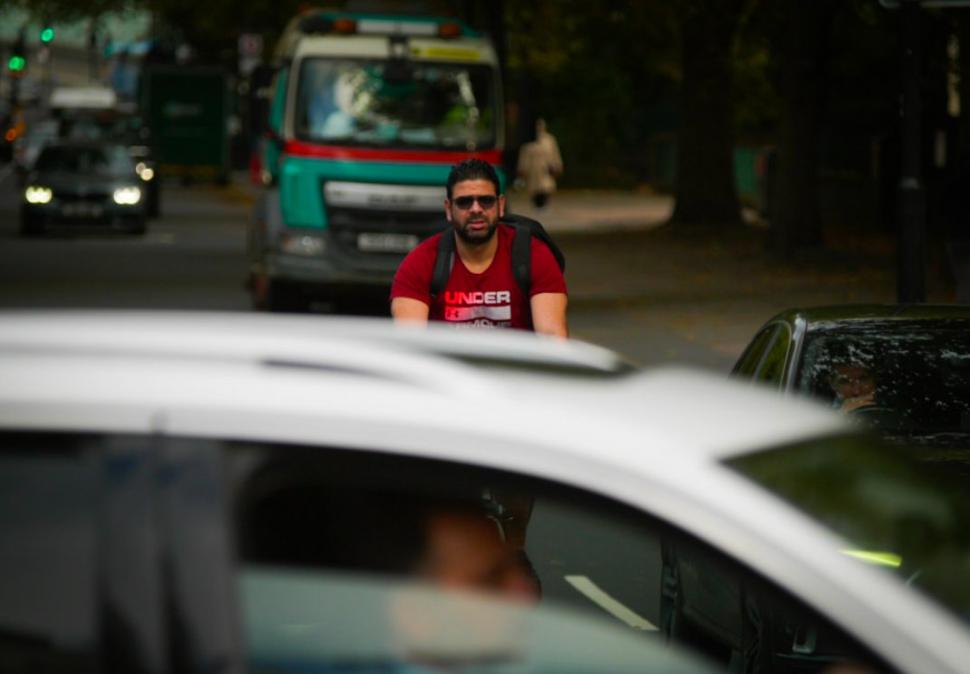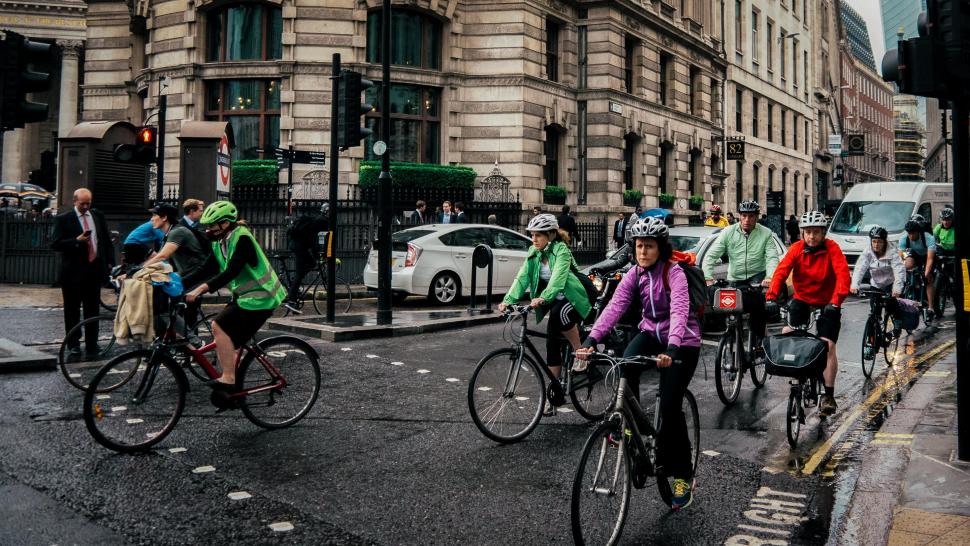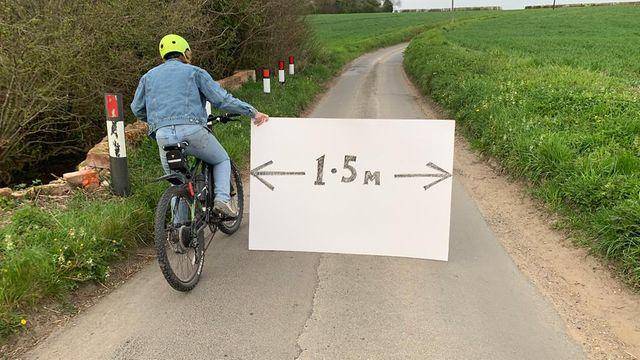- News
- Reviews
- Bikes
- Accessories
- Accessories - misc
- Computer mounts
- Bags
- Bar ends
- Bike bags & cases
- Bottle cages
- Bottles
- Cameras
- Car racks
- Child seats
- Computers
- Glasses
- GPS units
- Helmets
- Lights - front
- Lights - rear
- Lights - sets
- Locks
- Mirrors
- Mudguards
- Racks
- Pumps & CO2 inflators
- Puncture kits
- Reflectives
- Smart watches
- Stands and racks
- Trailers
- Clothing
- Components
- Bar tape & grips
- Bottom brackets
- Brake & gear cables
- Brake & STI levers
- Brake pads & spares
- Brakes
- Cassettes & freewheels
- Chains
- Chainsets & chainrings
- Derailleurs - front
- Derailleurs - rear
- Forks
- Gear levers & shifters
- Groupsets
- Handlebars & extensions
- Headsets
- Hubs
- Inner tubes
- Pedals
- Quick releases & skewers
- Saddles
- Seatposts
- Stems
- Wheels
- Tyres
- Health, fitness and nutrition
- Tools and workshop
- Miscellaneous
- Cross country mountain bikes
- Tubeless valves
- Buyers Guides
- Features
- Forum
- Recommends
- Podcast
news
 Cyclist in traffic (copyright Simon MacMichael)
Cyclist in traffic (copyright Simon MacMichael)Most drivers wrongly believe cyclists must ride single file, stay close to the kerb, and use cycle lanes – and one in three say they shouldn’t have equal rights on the road, new Highway Code survey finds
More than three years since a series of changes were made to the Highway Code to better protect vulnerable road users, prompting hysteria in certain sections of the British press, a recent survey has found that the majority of motorists are still unaware, or do not correctly understand, the rules around cyclists.
Those findings come courtesy of Scrap Car Comparison, who surveyed 2,000 drivers last month on their knowledge of the updated Highway Code and its rules concerning people on bikes, as well as their attitudes and behaviour towards cyclists on the road.
Changes to the Highway Code were implemented in January 2022 to better protect vulnerable road users, and included establishing a hierarchy of road users with those most vulnerable (pedestrians, cyclists, and horse riders) placed at the top.
Other updates included advising cyclists to “ride in the centre of your lane” to increase visibility on quiet roads, in slower-moving traffic, and when approaching junctions, and to stay 0.5m away from the kerb even on busy roads.
The Highway Code also acknowledges that it can often be safer to ride two abreast, particularly in larger groups or when accompanying less experienced cyclists, and while dedicated cycling infrastructure can make journeys “safer and easier”, cyclists “may exercise their judgement and are not obliged to use them”.
> The Highway Code for cyclists — all the rules you need to know for riding on the road explained
However, according to Scrap Car Comparison’s research – which provided drivers with four statements related to the Highway Code and asked them to determine whether they are true or false – it seems the new guidance still hasn’t fully crept into the public consciousness, three years on.
When provided with the statement ‘Cyclists must use a cycle lane is one is available’, 77 per cent of the motorists surveyed incorrectly asserted that this was true, while 65 per cent wrongly agreed that ‘cyclists must stay as close to the left-hand side of the road as possible’.
Meanwhile, half of those surveyed erroneously believed that the statement ‘Cyclists are allowed to take up a full lane of the road’ was false, with just 34 per cent identifying this as true. Meanwhile, over half (53 per cent) incorrectly agreed that cyclists must always ride in single file.
> Highway Code: One-in-four drivers still don't know correct rule on cyclist priority
“Seeing such a huge number of drivers answer incorrectly to these true and false statements highlights a hole in many people’s knowledge when it comes to the Highway Code,” the valuation site said in a statement.
“Many of the statements reference topics such as group riding and ‘taking the line’ which are common points of tension between cyclists and drivers, highlighting that regardless of whether a particular driver agrees with the rules or not, many conflicts could likely be avoided due to better understanding of the legalities of road cycling, and the responsibilities of drivers in these cases.
“However, it is well worth pointing out that many of the people that answered incorrectly were also cyclists, again demonstrating the importance of everyone, cyclist or not, brushing up on the rules of the road. With so many people heading out on their bikes without a clear understanding of where they stand legally on the road, there’s no wonder that the driver-cyclist relationship is so strained!”
> "Check the Highway Code": Police officer claims cyclist shouldn't ride "in the middle of the road"
This “strained” driver-cyclist relationship was explored elsewhere in the survey, with motorists asked about how they feel when sharing the road with people on bikes.
According to the survey, 74 per cent of motorists said they feel “some level” of frustration when driving near cyclists, with less than 10 per cent claiming that they “never” feel frustration.
These levels of frustration were highest among drivers aged between 17 and 24 – with 81 per cent of those in that bracket admitting they get frustrated by cyclists – while women (76 per cent) are more likely to become frustrated than men (71 per cent).
Unsurprisingly, a higher percentage of non-cyclists (76 per cent) experience frustration when driving near people on bikes than cyclists, though a shockingly high 64 per cent of self-described cyclists admitted feeling some frustration when driving their car around those on two wheels.
Meanwhile, 75 per cent of drivers said they always, often, or sometimes feel nervous when around cyclists, with this number highest among women (81 per cent) and young drivers (88 per cent).
And finally, drawing on the kinds of toxic social media debates surrounding cycling, the survey asked its participants: “Do you believe that cyclists have equal rights to use the road as drivers?” In response, 33 per cent stated that cyclists shouldn’t have equal rights, though 60 per cent agreed that they should.
Perhaps more encouragingly, 96 per cent of drivers claimed that they always leave the recommended 1.5m when overtaking cyclists, though 47 per cent said they’d been involved in a near miss with a cyclist at least once on the roads.
> Cyclists wearing helmets seen as "less human" than those without, researchers find
Using the data collected from their survey, the researchers compiled an index of the least bike-friendly cities in the UK, as well as the car brands most associated with negativity towards cycling.
According to their table, Sheffield finished ‘top’ as the least cycle-friendly city in the country, with a ‘cycling negativity’ score of 92.5 – based on knowledge, frustration, attitudes, and overtaking distances – with Newcastle and Leeds rounding off the podium with 84.1 and 82.8 respectively.
Belfast was revealed to be the UK’s most bike-friendly city, with a lowly negativity score of 56 – though, judging by the recent backlash against the Northern Ireland capital’s paltry cycling infrastructure and dangerous road conditions, I’m not sure many of the city’s cyclists would agree with that particular accolade.
When it comes to car brands, Mazda owners topped the table for cycling negativity, with a score of 83.3, while Mercedes-Benz enthusiasts were a close second with 83, with Seat in third at 77.7. Audi, meanwhile, only came tenth, with a score of 73.4.
As noted above, the changes to the Highway Code were brought in three years ago and prompted much discussion and hysteria at the time. Just days before the revisions came into force, two major newspapers misrepresented the rules around the ‘Dutch Reach’ technique, designed to reduce the chances of dooring a cyclist.
A further concern came with the lack of communication of the changes to the public, with Cycling UK at the time calling for a long-term public awareness campaign to help produce a “mindset shift” on British roads.
In fact, it took until July 2022, six months after they came into effect, for the changes to be promoted in a THINK! road safety campaign, though an AA survey from three months later showed that 61 per cent of drivers had not read the new rules – a situation which, judging by this most recent research, has persisted into 2025.
After obtaining a PhD, lecturing, and hosting a history podcast at Queen’s University Belfast, Ryan joined road.cc in December 2021 and since then has kept the site’s readers and listeners informed and enthralled (well at least occasionally) on news, the live blog, and the road.cc Podcast. After boarding a wrong bus at the world championships and ruining a good pair of jeans at the cyclocross, he now serves as road.cc’s senior news writer. Before his foray into cycling journalism, he wallowed in the equally pitiless world of academia, where he wrote a book about Victorian politics and droned on about cycling and bikes to classes of bored students (while taking every chance he could get to talk about cycling in print or on the radio). He can be found riding his bike very slowly around the narrow, scenic country lanes of Co. Down.
Latest Comments
- Secret_squirrel 3 sec ago
Theee are figures out there on splits - I've seen them on road.cc before. ...
- levestane 1 min 19 sec ago
On my all-rounder bike 44-11 is the longest gear, with 24-43 being the shortest, this with 150 cranks. I'd generally be using 44-15 on flat road ...
- Rendel Harris 2 min 59 sec ago
I know, that was my point, most manufacturers offer a choice with their highest end bikes of Dura Ace or SRAM Red and the majority of teams choose...
- brooksby 1 hour 55 min ago
So they were asked what the HC says and answered with what they thought that it OUGHT to say?
- jaymack 2 hours 2 min ago
"You can keep your nice, your leisurely and your convenience..." would seem to have been as important to Moko as it was to Mike. Let's hope that...
- wtjs 2 hours 10 min ago
Can't persuade it to turn, despite editing and re-saving. Must be some odd rotation flag in the file
- Global Nomad 2 hours 25 min ago
seems odd to not mention the Filmores in this article, lots of options now emerging for tubelss valves. resisted changing for several years but the...
- Mr Blackbird 3 hours 39 min ago
Not sure if you are asking yourself to reply to yourself, or if you are asking me to reply....
- Rendel Harris 6 hours 30 min ago
The owner of that car wants to take it back to the dealer and get the lights fixed if they're so poor they can't see someone in red until they're...
- David9694 13 hours 24 min ago
Worcester hospital parking 'horrific' as petition handed in...



Add new comment
33 comments
Oh, there you go, with your commen sense.
For me it feels like 20% overtake correctly, leaving the required space and at an appropriate speed and about 20% really don't, some of which are clearly doing it with the aim of intimidating the cyclist.
Since the updates to the Highway Code I would say the numbers of both groups has increased slightly.
The rest drive a bit too close, either through ignorance of the rules or because they are bad at judging distances or the size of their massive vehicles. This is not normally an issue unless other factors, such as potholes are involved, but obviously not ideal.
So, slightly more knowledgeable than your average police officer?
Pages